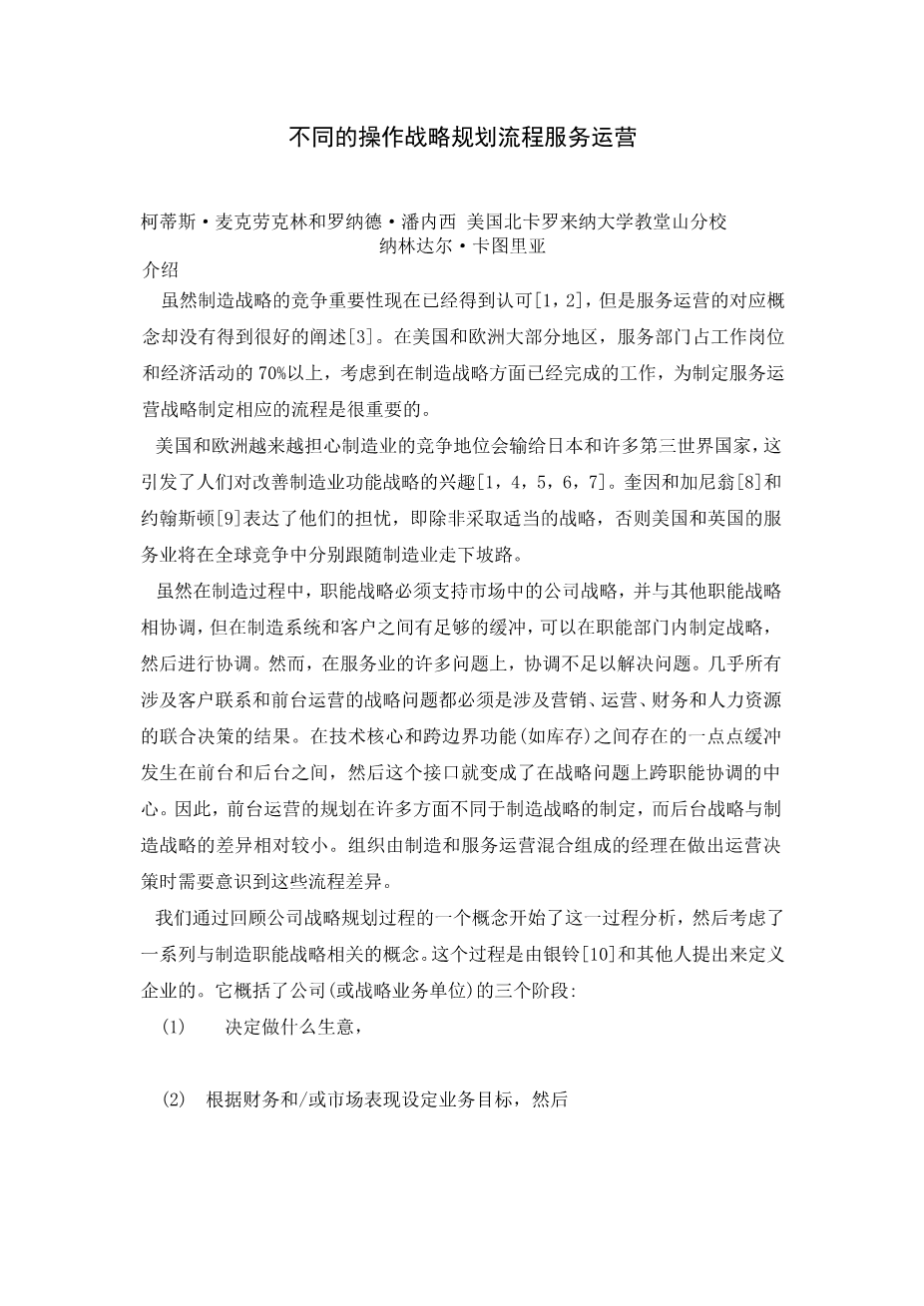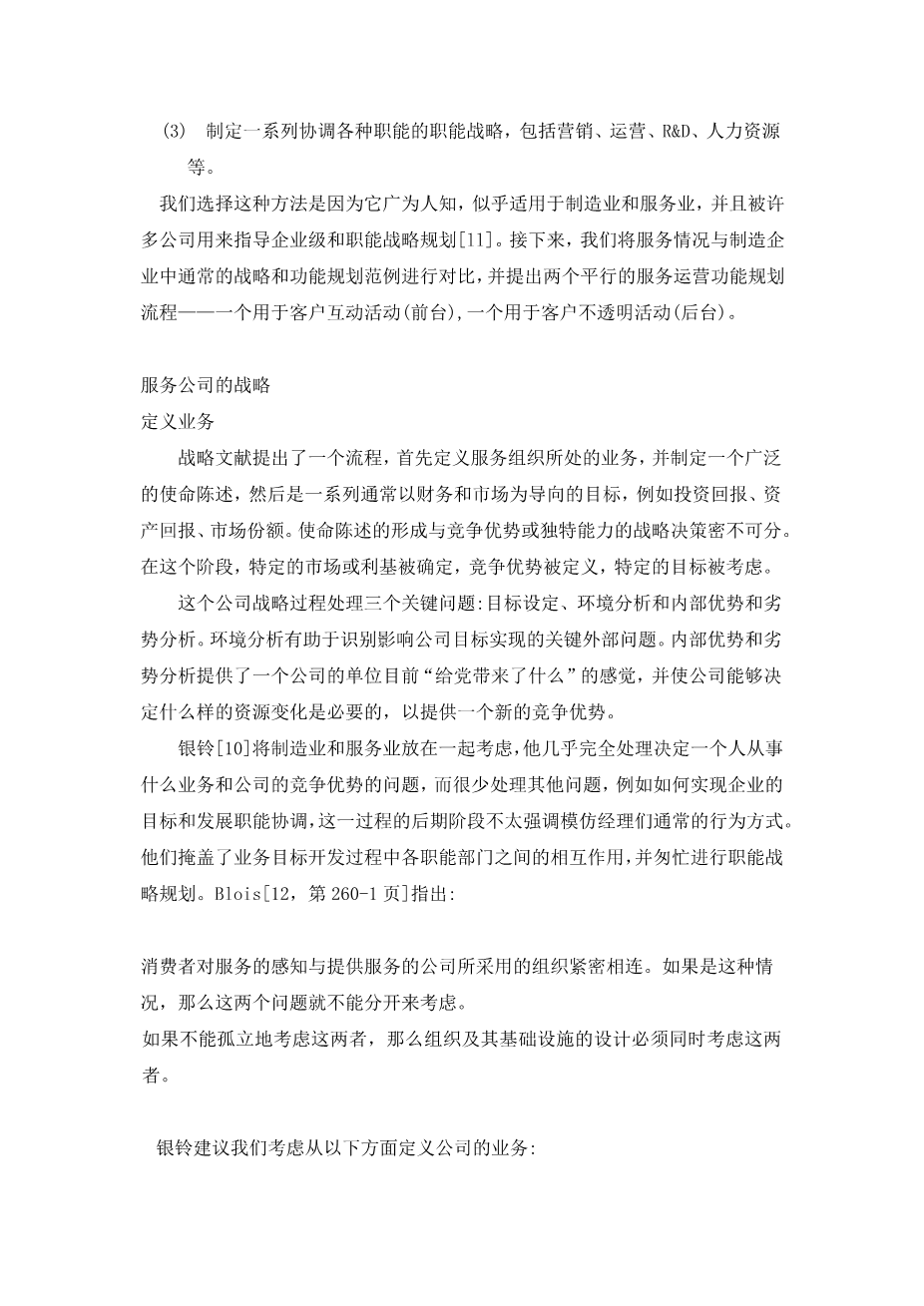|
Downloaded by University of Sydney Library At 00:13 20 March 2016 (PT) |
International Journal of Operations amp; Production Management
The Different Operations Strategy Planning Process for Service Operations Curtis P. McLaughlin Ronald T. Pannesi Narindar Kathuria
Article information:
To cite this document:
Curtis P. McLaughlin Ronald T. Pannesi Narindar Kathuria, (1991),'The Different Operations Strategy Planning Process for Service Operations', International Journal of Operations amp; Production Management, Vol. 11 Iss 3 pp. 63 - 76
Permanent link to this document:
http://dx.doi.org/10.1108/EUM0000000001268
Downloaded on: 20 March 2016, At: 00:13 (PT)
References: this document contains references to 0 other documents.
To copy this document: permissions@emeraldinsight.com
The fulltext of this document has been downloaded 2071 times since 2006*
Users who downloaded this article also downloaded:
Robert H. Lowson, (2002),'Operations strategy: genealogy, classification and anatomy', International Journal of Operations amp;amp; Production Management, Vol. 22 Iss 10 pp. 1112-1129 http:// dx.doi.org/10.1108/01443570210446333
Martin Spring, Luis Araujo, (2009),'Service, services and products: rethinking operations strategy', International Journal of Operations amp;amp; Production Management, Vol. 29 Iss 5 pp. 444-467 http:// dx.doi.org/10.1108/01443570910953586
Peter Burcher, (1992),'Master Production Scheduling and Capacity Planning: The Link?', Integrated Manufacturing Systems, Vol. 3 Iss 4 pp. 16-22 http://dx.doi.org/10.1108/09576069210018925
Access to this document was granted through an Emerald subscription provided by emerald-srm:216535 []
For Authors
If you would like to write for this, or any other Emerald publication, then please use our Emerald for Authors service information about how to choose which publication to write for and submission guidelines are available for all. Please visit www.emeraldinsight.com/authors for more information.
About Emerald www.emeraldinsight.com
Emerald is a global publisher linking research and practice to the benefit of society. The company manages a portfolio of more than 290 journals and over 2,350 books and book series volumes, as well as providing an extensive range of online products and additional customer resources and services.
Emerald is both COUNTER 4 and TRANSFER compliant. The organization is a partner of the Committee on Publication Ethics (COPE) and also works with Portico and the LOCKSS initiative for digital archive preservation.
*Related content and download information correct at time of download.
|
Downloaded by University of Sydney Library At 00:13 20 March 2016 (PT) |
|
The Different Operations |
Operations |
|
|
Strategy |
||
|
Strategy Planning Process for |
Planning |
|
|
Service Operations |
||
|
Curtis P. McLaughlin and Ronald T. Pannesi |
63 |
University of North Carolina at Chapel Hill, USA
Narindar Kathuria
National Institutefor Training in Industrial Engineering, Bombay, India
|
Downloaded by University of Sydney Library At 00:13 20 March 2016 (PT) |
Introduction
Although the competitive importance of manufacturing strategy is now recognised[l,2], the counterpart concepts for service operations are less well articulated[3]. With the service sector accounting for over 70 per cent of jobs and economic activity in the USA and much of Europe, it is important to develop a corresponding process for developing service operations strategy, taking into account the work already done on manufacturing strategy.
The growing concern in the USA and Europe over losses in competitive position in manufacturing to Japan and many Third World countries has led to renewed interest in improving functional strategies for manufacturing[l,4,5,6,7]. Quinn and Gagnon[8] and Johnston[9] have expressed their concerns that American and British service industries respectively will follow manufacturing downhill in worldwide competition unless appropriate strategies are adopted.
While in manufacturing the functional strategy must support the corporate strategy in the marketplace and be co-ordinated with other functional strategies, there is sufficient buffering between the manufacturing system and the customer that strategies can be developed within functions and then co-ordinated. In services, however, there are many issues where co-ordination is not an adequate response. Virtually all strategic issues involving customer contact and front-office operations must be the result of joint decision making involving marketing, operations, finance, and human resources. What little buffering there is between the technical core and the boundary-spanning functions, such as inventory, occurs between the front office and the back room and this interface then becomes the locus for interfunctional co-ordination on strategic issues. Consequently, planning for the front-office operations differs in many ways from the manufacturing strategy development, while the back-room strategy differs relatively little from manufacturing strategy. Managers whose organisations consist of a mixture of manufacturing and services operations need to be aware of these process differences when making operation
剩余内容已隐藏,支付完成后下载完整资料


英语译文共 16 页,剩余内容已隐藏,支付完成后下载完整资料
资料编号:[604290],资料为PDF文档或Word文档,PDF文档可免费转换为Word


